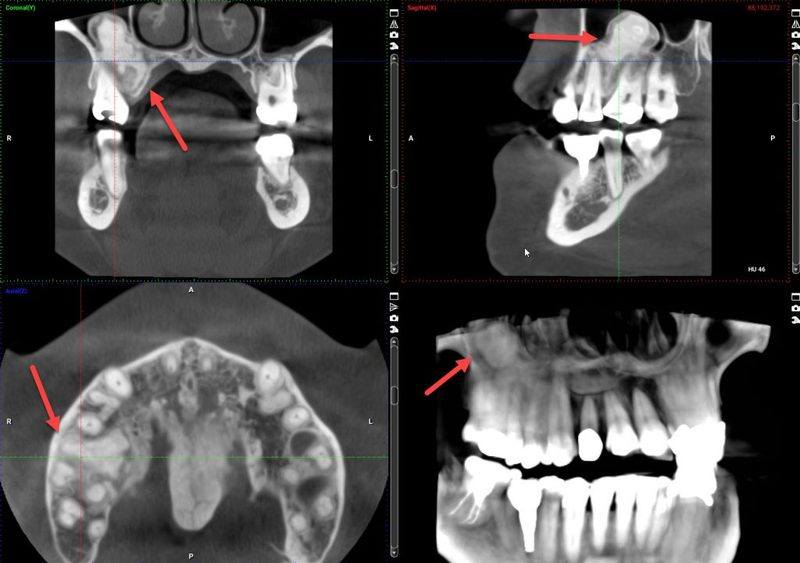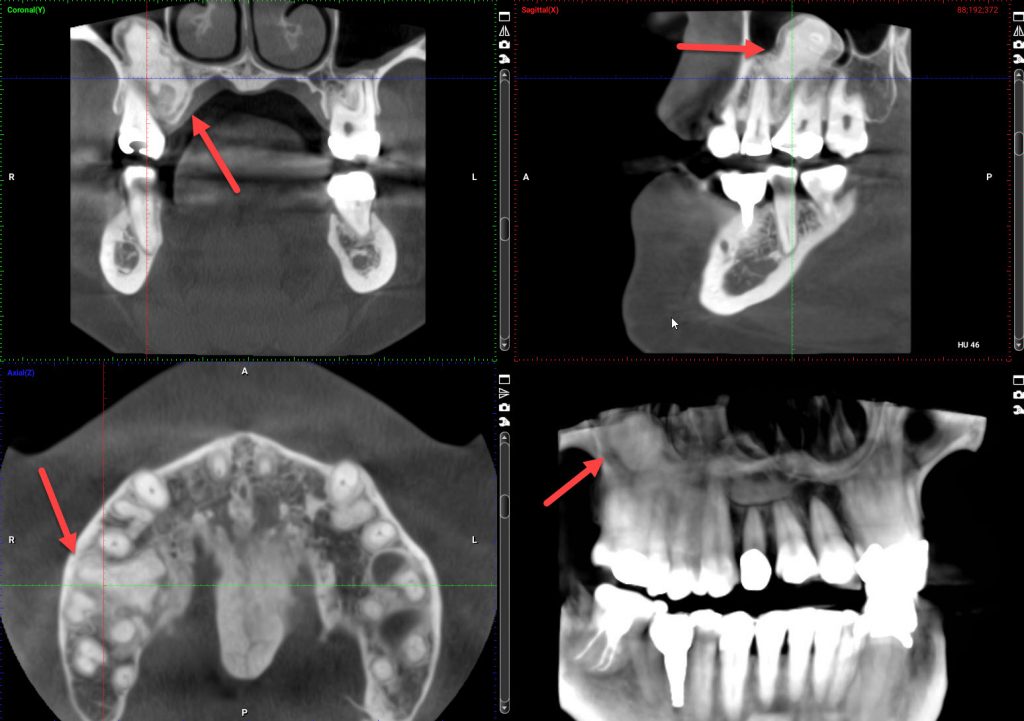
Dental X-rays are essential for assessing oral health, revealing details like cavities and bone loss. The ability of X-rays to penetrate dental crowns depends on the crown material. Metal-based crowns, like gold or silver alloys, are generally opaque, hindering X-ray penetration. Conversely, porcelain or ceramic crowns are more translucent, allowing some X-ray visibility. Despite this, images may not be as clear as with uncrowned teeth. Dentists may opt for crown removal during X-rays or use techniques like cone beam computed tomography (CBCT) for detailed views. While X-rays can see through crowns to some extent, clarity varies based on crown composition.
Can Dental X Rays See Through Crowns?
Dental x-rays are an essential tool in diagnosing and treating various dental conditions. They allow dentists to see beyond what is visible to the naked eye, providing valuable information about the health of your teeth and supporting structures. However, when it comes to dental crowns, there may be some limitations to what x-rays can reveal.
How Dental X-Rays Work
Dental x-rays use a small amount of radiation to capture images of the teeth, jawbone, and surrounding tissues. The x-ray machine emits a beam of radiation that passes through the mouth and is absorbed differently by different structures. Dense structures, such as teeth and metal fillings, appear white on the x-ray film, while less dense structures, like gums and soft tissues, appear darker.
- Porcelain or ceramic crowns, termed radiolucent, allow X-rays to pass through for clearer imaging.
- Metal crowns, like gold or silver, are radiopaque, obstructing X-ray penetration.
- Radiolucent Crowns:
- Porcelain or ceramic crowns permit easy X-ray penetration.
- This transparency facilitates the detection of underlying tooth structures and issues such as decay or infection.
- Radiopaque Crowns:
- Metal crowns impede X-rays, making it challenging for dentists to visualize the underlying tooth structure.
- Additional diagnostic tools, like clinical examination or cone-beam computed tomography (CBCT), may be necessary for a comprehensive assessment.
Why X-Rays Are Important for Dental Crowns
Even though some crowns may hinder the visibility of the underlying tooth structure, dental x-rays are still essential in the evaluation and maintenance of dental crowns. Here are some reasons why x-rays are crucial for dental crown assessment:
1. Checking for Decay
While crowns are designed to protect the underlying tooth from further damage, decay can still occur at the margin where the crown meets the tooth. X-rays can help detect any signs of decay or cavities that may be developing beneath the crown.
2. Assessing Fit and Integrity
X-rays can reveal any gaps between the crown and the tooth, indicating an improper fit. They can also show whether the crown is securely attached to the tooth and whether there are any signs of damage or deterioration.
3. Monitoring Bone Health
Dental x-rays can also assess the health of the underlying jawbone. If there are any signs of bone loss or changes in bone density, it may affect the stability and longevity of the dental crown.
Other Imaging Techniques for Assessing Dental Crowns
In addition to x-rays, other imaging techniques can provide valuable information about dental crowns. One such technique is cone-beam computed tomography (CBCT), which creates a three-dimensional image of the teeth and surrounding structures. CBCT can provide more detailed information about the crown, including its fit, position, and relationship with adjacent teeth.
Conclusion
In conclusion, dental x-rays can see through certain types of dental crowns, particularly those made of porcelain or ceramic. However, metal crowns may hinder the visibility of the underlying tooth structure. Despite this limitation, x-rays are still essential in assessing the fit, integrity, and overall health of dental crowns. Dentists may also utilize other imaging techniques, such as CBCT, for a more comprehensive evaluation. Regular dental x-rays and examinations are crucial for maintaining the health and longevity of dental crowns.
Key Takeaways
- Dental X-rays can see through some types of crowns, but not all.
- Porcelain or ceramic crowns may appear as a white, opaque area on X-rays.
- Metal crowns, such as those made of gold or silver, may block the X-ray beam and appear as a dark area.
- If the crown is made of a combination of materials, it may show up as a mix of white and dark areas on the X-ray.
- In some cases, the edge of the crown may not be visible on X-rays, making it difficult to detect any issues underneath.
Frequently Asked Questions
Can dental X-rays see through crowns?
One common question that arises when it comes to dental X-rays is whether they can see through crowns. Let’s dive into the answer to this query to provide a better understanding.
Dental X-rays are an essential tool for dentists to diagnose and treat various oral conditions. However, when it comes to crowns, the answer is not as straightforward. While dental X-rays can penetrate certain materials, such as enamel and dentin, they may face challenges when it comes to crowns.
Generally, dental X-rays are not able to see through metal crowns as they are dense and can block the X-ray beam. However, X-rays can still provide valuable information about the teeth and structures surrounding the crown, allowing dentists to assess the overall oral health.
How are dental X-rays used when crowns are present?
Even though dental X-rays may not be able to see through crowns, they are still utilized in dental examinations to evaluate the health of the teeth and surrounding structures. Dentists can use X-rays to identify any issues, such as decay or infection, that may be occurring beneath the crown.
In some cases, dentists may need to remove the crown temporarily to obtain a more accurate X-ray image. This allows them to assess the underlying tooth and detect any potential problems that may require treatment. Once the X-ray examination is complete, the crown can be repositioned, ensuring the patient’s dental health is effectively managed.
Are there any alternatives to dental X-rays for evaluating crowns?
If dental X-rays are not suitable for visualizing the area beneath a crown, alternative methods may be employed to assess the condition of the underlying tooth. One such method is the use of intraoral cameras, which can capture detailed images of the teeth and surrounding structures.
Intraoral cameras provide a visual examination of the teeth and can identify any visible issues, such as decay or damage, without the need for X-rays. However, it’s important to note that intraoral cameras may not provide the same level of diagnostic information as X-rays and are primarily used as a complementary tool in dental examinations.
When are dental X-rays necessary for evaluating crowns?
While dental X-rays may not always provide a complete view of the area beneath a crown, there are situations where they are necessary for proper evaluation. For example, if a patient is experiencing symptoms such as toothache or swelling, X-rays may be required to determine the underlying cause and develop an appropriate treatment plan.
In addition, dental X-rays are essential when planning a new crown or assessing the fit and positioning of an existing crown. They allow dentists to ensure the crown fits well and does not impinge on the surrounding structures, promoting optimal oral health and functionality.
Can dental X-rays damage crowns?
When performed by a trained dental professional, dental X-rays should not cause any damage to crowns or other dental restorations. The X-ray equipment used in dental offices is designed to emit a minimal amount of radiation, ensuring patient safety.
However, it’s worth noting that excessive exposure to X-rays over time can potentially weaken or damage dental restorations, including crowns. This is why dentists follow strict guidelines regarding the frequency and necessity of X-ray examinations, ensuring that the benefits outweigh any potential risks.
Why Do You Take X Rays for Dental Crowns?
Final Summary: Can Dental X Rays See Through Crowns?
While dental X-rays offer valuable insights into oral health, their ability to see through crowns is limited. Tooth-shaped caps, known as crowns, can obstruct X-ray beams, hindering a clear view of underlying structures. Technological advancements, like cone beam computed tomography (CBCT), provide more detailed images and enhanced penetration through crowns. These sophisticated techniques are particularly beneficial in complex dental cases requiring thorough assessments. Dentists can determine the most appropriate imaging method based on individual needs, considering potential hindrances from crowns. Regular dental check-ups, incorporating X-rays when necessary, remain essential for maintaining a healthy smile and addressing dental conditions effectively.
Call or Book appointment online
:Ace Dental Care Alpharetta office: 678-562-1555 - Book Now
Ace Dental Care Norcross office: 770-806-1255 - Book Now
Disclaimer
This blog post was generated by artificial intelligence. The content of this post may not be accurate or complete, and should not be relied upon as a substitute for professional advice. If you have any questions about the content of this post, please contact us.
We are constantly working to improve the accuracy and quality of our AI-generated content. However, there may still be errors or inaccuracies. We apologize for any inconvenience this may cause.





